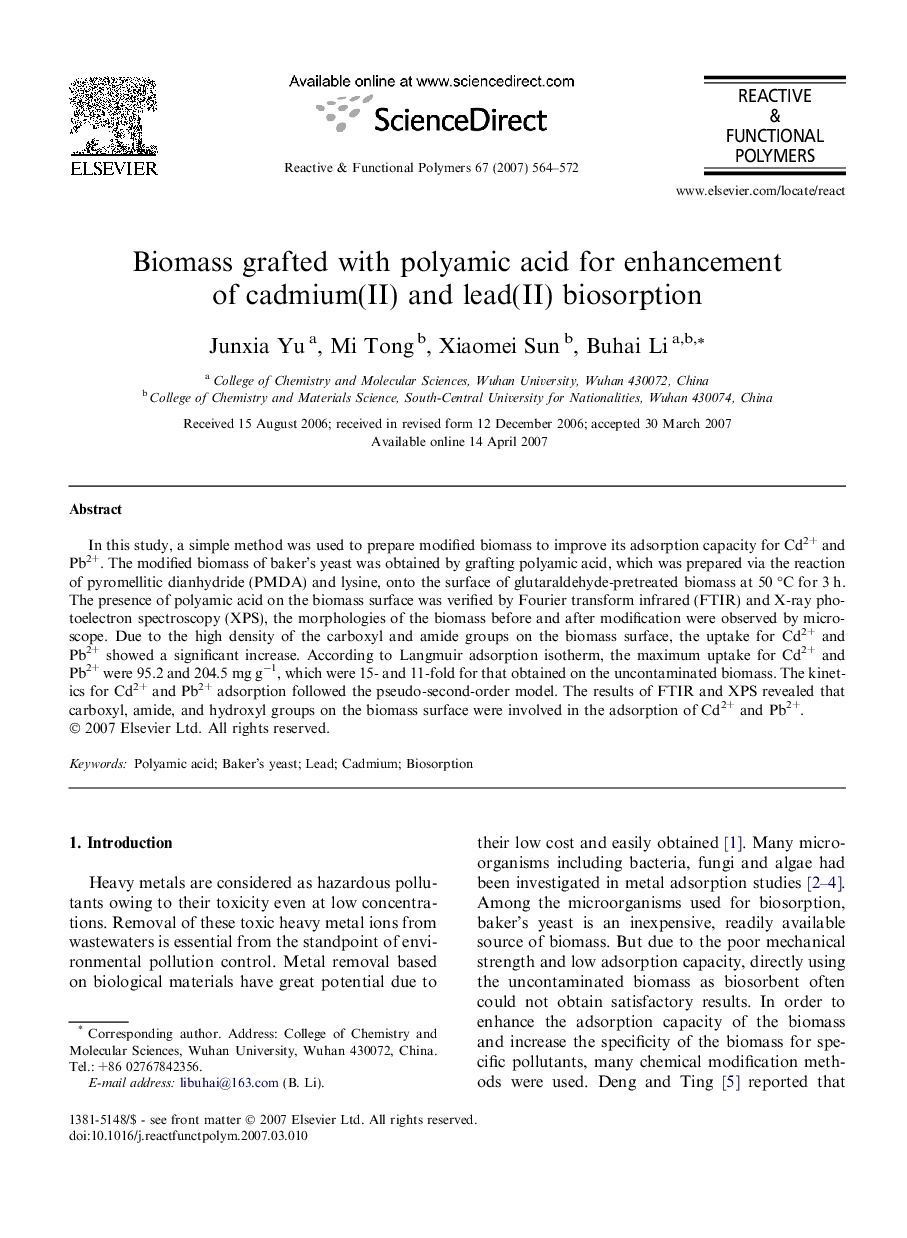| Article ID | Journal | Published Year | Pages | File Type |
|---|---|---|---|---|
| 5211646 | Reactive and Functional Polymers | 2007 | 9 Pages |
Abstract
In this study, a simple method was used to prepare modified biomass to improve its adsorption capacity for Cd2+ and Pb2+. The modified biomass of baker's yeast was obtained by grafting polyamic acid, which was prepared via the reaction of pyromellitic dianhydride (PMDA) and lysine, onto the surface of glutaraldehyde-pretreated biomass at 50 °C for 3 h. The presence of polyamic acid on the biomass surface was verified by Fourier transform infrared (FTIR) and X-ray photoelectron spectroscopy (XPS), the morphologies of the biomass before and after modification were observed by microscope. Due to the high density of the carboxyl and amide groups on the biomass surface, the uptake for Cd2+ and Pb2+ showed a significant increase. According to Langmuir adsorption isotherm, the maximum uptake for Cd2+ and Pb2+ were 95.2 and 204.5 mg gâ1, which were 15- and 11-fold for that obtained on the uncontaminated biomass. The kinetics for Cd2+ and Pb2+ adsorption followed the pseudo-second-order model. The results of FTIR and XPS revealed that carboxyl, amide, and hydroxyl groups on the biomass surface were involved in the adsorption of Cd2+ and Pb2+.
Related Topics
Physical Sciences and Engineering
Chemistry
Organic Chemistry
Authors
Junxia Yu, Mi Tong, Xiaomei Sun, Buhai Li,
